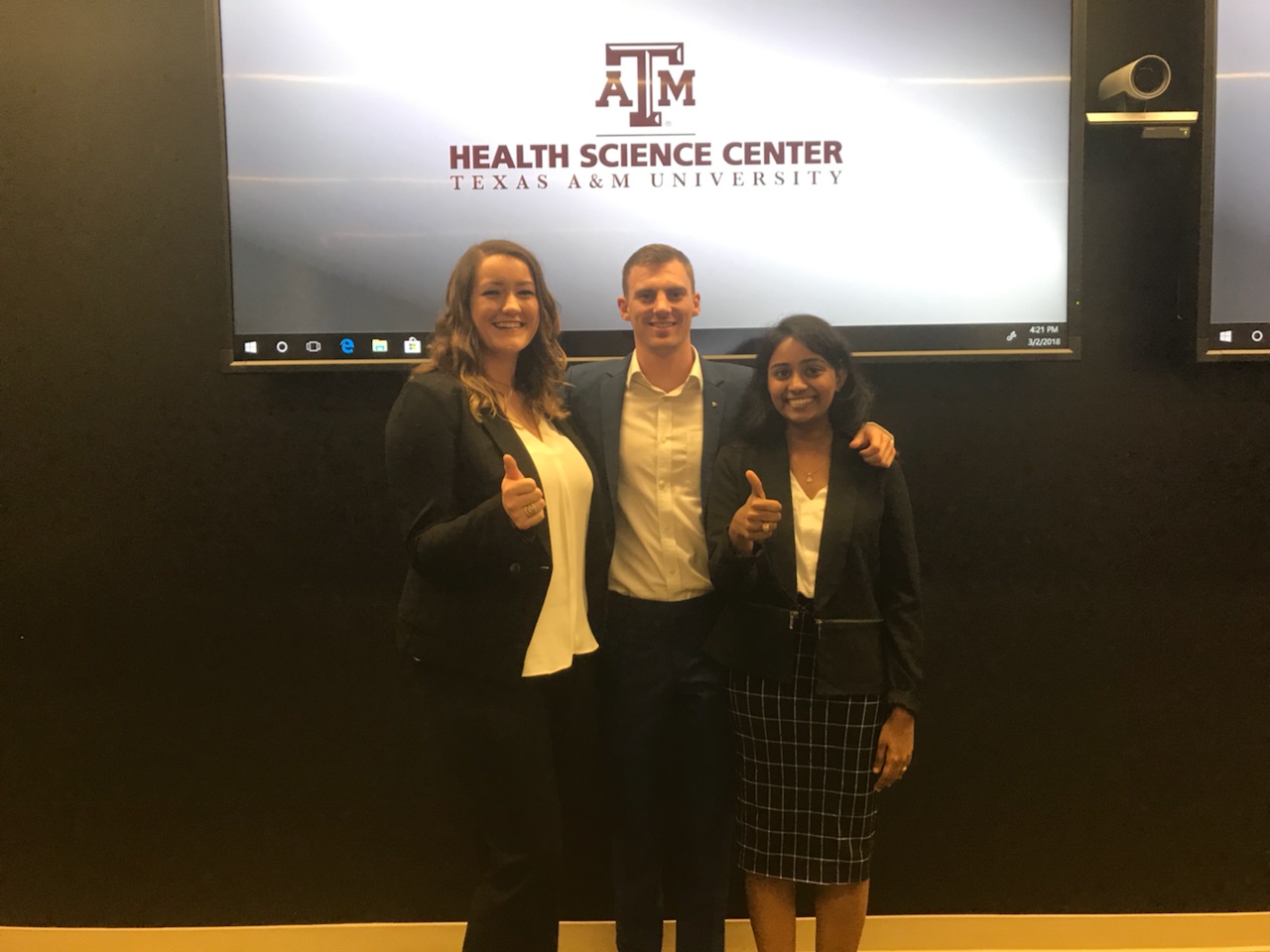Texas A&M hosts its first CLARION case competition

Texas A&M University Health Science Center students battled it out on March 2 to see which students are the best at solving real-world problems in health care, and who will represent the university at the upcoming National CLARION Case Competition in April.
CLARION case competitions were created in response to issues of quality and patient safety in health care. Medical errors are the third leading cause of death in the US, and are estimated to account for over 250,000 deaths annually. The National Academy of Medicine has cited poor communication and a lack of teamwork as contributors to these errors, and it suggested that interprofessional education is a key to reduce these deaths. This has brought interprofessional education to the forefront of health care curriculums across the nation.
The student teams had one month to prepare responses to a case on the opioid crisis, where the patients’ situations needed immediate investigation and a response.
Hosted by the Texas A&M Health Science Center Office of Interprofessional Education & Research (IPER), this competition created a fun and competitive stage to help hone interprofessional communication and problem-solving skills. The competition brought together students from across the Health Science Center colleges of dentistry, medicine, nursing, pharmacy and public health.
“Collaborative practice and improved patient and population health are the ultimate goals of interprofessional education,” said Christine Kaunas, MPH, executive director of IPER. “In this competition, students are learning with, from and about each other, which is the World Health Organization’s definition of interprofessional education. Students worked in small teams and engaged students from other professions. They had to critically analyze a problem and propose solutions to prevent it from happening again.”
Interprofessional education staff worked with all five colleges in the Health Science Center to recruit the students, held a workshop to inform students about the competition, assigned students to specific teams and gathered the panel of judges. Students from across the Health Science Center’s campuses in Bryan-College Station, Dallas, Houston, Kingsville, Temple and Round Rock gathered to participate in this event. Judges included an interprofessional panel of faculty as well as community health partners.
The case study incorporated the ‘triple aim’ framework developed by the Institute for Healthcare Improvement. This approach seeks to optimize health system performance with three goals: improve patient care experience, improve population health and reduce health care per capita cost.
Each team presented their findings and recommendations on the case study in a 20-minute presentation and 10-minute Q&A session with the judges. The teams were evaluated on their analysis based on real-world best practices. Criteria included identifying the major problems, incorporating interprofessional practice into the analysis, presenting feasible recommendations supported by evidence and poise of verbal delivery, among others.
“We wanted to host this competition as it addresses the four nationally recognized competencies for interprofessional education: respect for each other’s practice, understanding one’s own roles and responsibilities and those of other health professions, interprofessional communication, and teams and teamwork,” Kaunas said.
The competition winners are: Akshaya Selvamani, third-year medical student, Lauren Smith, who is earning her second bachelor’s degree in nursing, and Cannon Woodbury, first-year medical student.
The winning team will represent the Health Science Center at the national competition in Minnesota on April 13–14, 2018. This is the 14th annual CLARION national competition to be held at the University of Minnesota. Sixteen other university teams will compete against Texas A&M for the prize.
“We want the event to be even larger next year and to have interprofessional education as part of our institutional culture,” Kaunas said. “This competition is just one aspect of our overarching vision for an innovative model that builds a bridge from interprofessional education to collaborative practice.”
Media contact: media@tamu.edu


